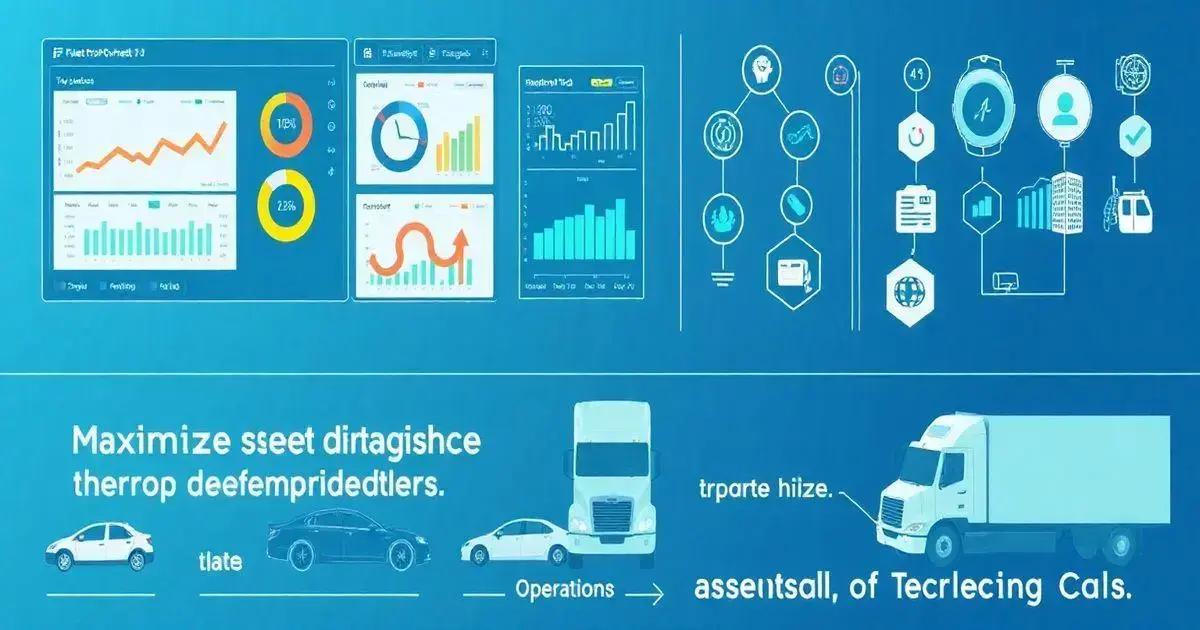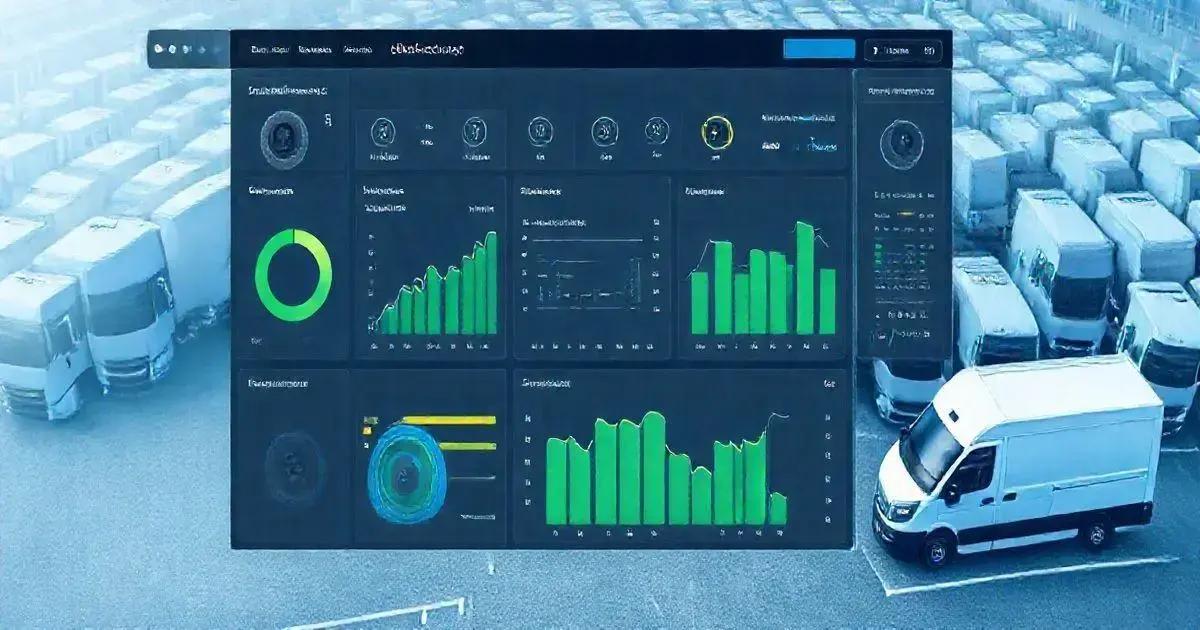Unlock Efficiency with Fleet Control Worksheet 7.0 Leave a comment
The Fleet Control Worksheet 7.0 is an essential tool for improving fleet management, offering features such as dashboards for key performance indicators, travel control, tire management, and maintenance tracking. It enables organizations to effectively manage vehicle performance and costs, leading to enhanced operational efficiency, cost savings, and optimized fleet service delivery.
The Fleet Control Worksheet 7.0 is a powerful tool designed to maximize your fleet management capabilities. With features like initial dashboards, tire control, and maintenance tracking, this template is invaluable for anyone looking to streamline operations. Whether you’re managing a small fleet or a large one, this worksheet provides all the essential tracking and management tools you need in one place.
Overview of Fleet Control Worksheet 7.0
The Fleet Control Worksheet 7.0 is an advanced spreadsheet template that simplifies the complexities of managing a fleet.
Designed with user accessibility in mind, this worksheet offers a comprehensive solution for tracking various aspects of fleet operations.
At its core, the Fleet Control Worksheet provides detailed dashboards that give insights into vehicle performance, fuel consumption, and maintenance schedules.
It also allows for the registration of drivers and vehicles, ensuring that all necessary information is centralized and easily accessible.
With features like tire control, preventive and corrective maintenance tracking, and travel expense monitoring, users can keep close tabs on their fleet’s operational efficiency.
Whether you’re in logistics, transport, or any industry relying on a fleet, this worksheet aims to enhance your management capabilities, leading to reduced costs and improved service delivery.
Moreover, the worksheet is compatible with various Excel versions, making it a versatile choice for organizations of all sizes.
By adopting this Fleet Control Worksheet, you’re not just managing vehicles; you’re optimizing your entire fleet operation for better productivity and cost-effectiveness.

Key Features and Benefits
The Fleet Control Worksheet 7.0 comes packed with a variety of features designed to streamline fleet management. Here are some key highlights:
- Initial Dashboards: The worksheet includes intuitive dashboards that provide quick access to crucial metrics such as distance traveled per driver, average fuel consumption, and maintenance costs. This real-time data helps managers make informed decisions.
- Travel and Cargo Control: Keep track of all trips and cargo details linked directly to each journey. This feature ensures accountability and helps in optimizing routes for efficiency.
- Tire Management: With dedicated sections for tire control, users can schedule tire changes, monitor usage, and avoid unexpected failures. This proactive approach helps in maintaining vehicle safety and performance.
- Maintenance Tracking: The worksheet allows users to log both preventive and corrective maintenance tasks. By keeping a history of maintenance activities, fleet managers can identify patterns and prevent future breakdowns.
- Cost Analysis: Comprehensive cost tracking features enable users to analyze total expenses related to fuel, maintenance, and repairs, helping to pinpoint areas where savings can be achieved.
These features collectively enhance operational efficiency, reduce costs, and ultimately lead to better service delivery, making the Fleet Control Worksheet an essential tool for any organization managing a fleet.
How to Use the Worksheet Effectively
Using the Fleet Control Worksheet 7.0 effectively requires a clear understanding of its various functionalities and how they can be applied to your fleet management processes. Here are some practical steps to get started:
- Set Up Your Fleet Details: Begin by entering all relevant information about your vehicles and drivers in the designated sections. This includes vehicle types, registration details, and driver information. Having a comprehensive database will facilitate easier management.
- Utilize the Initial Dashboards: Make the most of the dashboards provided. Regularly check the key performance indicators (KPIs) such as kilometers driven per vehicle, maintenance costs, and fuel efficiency. These insights will help you identify trends and areas needing attention.
- Log Travel and Cargo Information: For each trip, input details such as departure and arrival times, cargo type, and expenses incurred. This will help in tracking deliveries and assessing operational efficiency.
- Track Maintenance Activities: Regularly update maintenance logs for each vehicle. Document both preventive and corrective maintenance tasks to build a history that can be reviewed for future planning. This helps in minimizing downtime and avoiding costly repairs.
- Analyze Costs: Use the cost tracking features to analyze your fleet’s operational expenses. Look for patterns in fuel usage and maintenance costs to uncover potential savings. By understanding your fleet’s financial aspects, you can make informed budgetary decisions.
- Review and Adjust Regularly: Set aside time each month to review the data collected in the worksheet. This includes analyzing performance metrics and making necessary adjustments to strategies, routes, or maintenance schedules based on the insights gained.
By following these steps, you can harness the full potential of the Fleet Control Worksheet 7.0, leading to improved efficiency and cost savings in your fleet operations.

Common Questions about Fleet Management
When it comes to fleet management, many users have common questions that can help clarify best practices and enhance usage of the Fleet Control Worksheet 7.0. Here are some frequently asked questions:
- What is fleet management, and why is it important?
Fleet management involves overseeing and coordinating a company’s vehicles. It is crucial for optimizing efficiency, reducing costs, and ensuring safety and compliance within the fleet. - How often should I update the worksheet?
It’s best to update the worksheet regularly, ideally after each trip or maintenance task. This ensures that all data is current and allows for accurate tracking of performance metrics. - Can I use this worksheet for different types of vehicles?
Absolutely! The Fleet Control Worksheet 7.0 is versatile and can be adapted for various vehicle types, whether you have trucks, cars, vans, or specialized vehicles. - Is there a way to automate data entries?
While the worksheet itself does not automate entries, consider integrating it with other software systems you use for vehicle tracking or fuel management. This can reduce manual input and enhance data accuracy. - How can I train my team to use this worksheet effectively?
Providing training sessions that cover the worksheet’s features can be valuable. Use examples from your own fleet management to illustrate how the worksheet can simplify tasks and improve efficiency. - What should I do if I encounter issues with the worksheet?
If you face any inconsistencies or technical issues, reach out to the support team that provided the worksheet. They can guide you with troubleshooting steps or provide updates if necessary.
Addressing these common questions can enhance understanding and utilization of the Fleet Control Worksheet, ultimately leading to a more efficient fleet management process.
Tips for Implementing Fleet Management Solutions
Implementing effective fleet management solutions requires careful planning and execution. Here are some practical tips to help streamline the process and enhance the use of the Fleet Control Worksheet 7.0:
- Define Clear Objectives: Start by identifying what you want to achieve with your fleet management system. Whether it’s reducing costs, improving efficiency, or enhancing safety, having clear goals will guide your implementation strategy.
- Conduct a Fleet Assessment: Evaluate your current fleet operations to identify strengths and weaknesses. Understanding your existing processes will help you determine areas that need improvement and how the worksheet can address those needs.
- Involve Your Team: Get input from drivers and fleet managers during the implementation process. Their feedback will provide valuable insights into practical challenges and can help tailor the solution to meet real-world needs.
- Utilize Training Resources: Make use of any available training materials or resources provided with the Fleet Control Worksheet. Organize training sessions to ensure that all users are comfortable with the features and functionalities of the worksheet.
- Regularly Monitor and Review: After implementation, continuously track performance metrics and review the data in your worksheet. This ongoing analysis will help you assess if your objectives are being met and where further adjustments may be necessary.
- Adapt and Evolve: Be open to making changes as you gather more data and insights from your fleet operations. The ability to adapt your strategies and tools, including the worksheet, will help you stay responsive to new challenges and opportunities.
By following these tips, you can effectively implement fleet management solutions that make the most of the Fleet Control Worksheet 7.0, leading to better operational efficiency and cost savings.
Conclusion
In conclusion, the Fleet Control Worksheet 7.0 is an invaluable tool for anyone looking to optimize their fleet management processes.
With its comprehensive features, including initial dashboards, maintenance tracking, and cost analysis, this worksheet enables users to streamline operations and make informed decisions.
By effectively utilizing the worksheet and implementing the best practices outlined in this article, you can enhance your fleet’s efficiency, reduce costs, and improve overall performance.
Whether you’re managing a small fleet or a large operation, the benefits of adopting this structured approach are clear.
Embrace the power of the Fleet Control Worksheet and take your fleet management to new heights!
FAQ – Frequently Asked Questions about Fleet Management
What is fleet management?
Fleet management refers to the processes involved in overseeing and coordinating a fleet of vehicles for an organization. It includes tracking vehicles, managing expenses, and ensuring compliance with regulations.
How can the Fleet Control Worksheet 7.0 benefit my fleet management?
The Fleet Control Worksheet 7.0 provides essential tools for tracking vehicle performance, maintenance schedules, travel details, and expenses, which can lead to improved efficiency and cost savings.
Is the worksheet compatible with all versions of Excel?
Yes, the Fleet Control Worksheet 7.0 is designed to work on various versions of Excel, making it accessible for most users.
Can I customize the worksheet to fit my specific fleet needs?
Absolutely! The worksheet is flexible and can be customized to accommodate the specific requirements of your fleet operations.
How often should I update the data in the worksheet?
It’s recommended to update the worksheet regularly, ideally after each trip or maintenance task, to ensure that all information is current and accurate.
What should I do if I encounter issues with the worksheet?
If you experience any technical issues or inconsistencies, reach out to the support team that provided the worksheet for assistance and troubleshooting.

